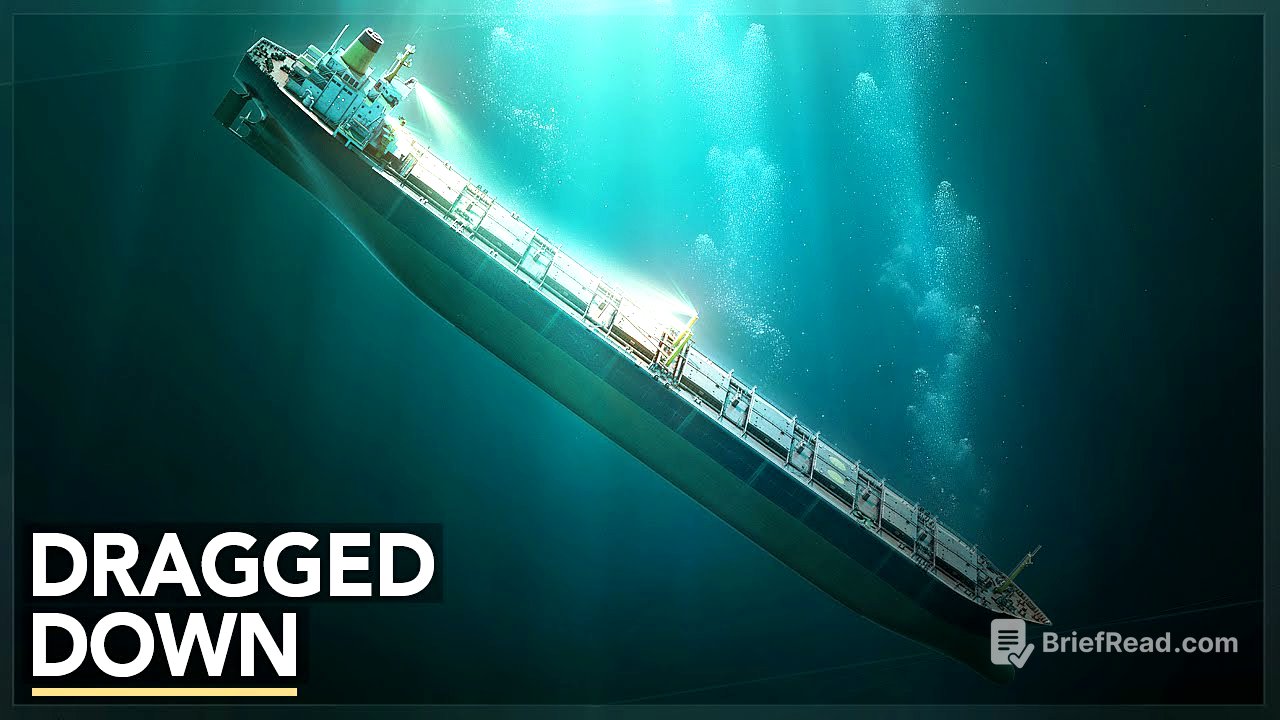TLDR;
This video investigates the disappearance of the MV Derbyshire, a massive cargo ship that vanished in 1980. It explores the initial search efforts, the concerns raised by the families of the crew, and the subsequent investigations that revealed the true cause of the disaster. The video highlights the families' relentless pursuit of the truth, which ultimately led to improved ship designs and maritime safety regulations.
- The MV Derbyshire disappeared without a trace in 1980 during Typhoon Orchid.
- Initial investigations were insufficient, leading families to form an association and push for further inquiry.
- Structural weaknesses and design flaws in the Bridge-class ships were suspected.
- The ship's wreckage was found in 1994, revealing a series of compounding failures rather than a single structural fault.
- The families' persistence led to significant improvements in maritime safety standards.
The Derbyshire's Final Voyage [0:02]
On September 9, 1980, the MV Derbyshire, a large cargo ship, was en route to Japan, encountering Typhoon Orchid. The ship, carrying 150,000 tons of ore from Canada, had been at sea for eight weeks. Captain Jeffrey Underhill, a seasoned mariner, aimed to outrun the storm, but the typhoon intensified. Standard procedures were followed, reducing speed and angling the ship into the waves. Despite the ship's size and modern construction, something unseen was about to occur, leading to its disappearance by dawn.
Vanished Without a Trace [3:16]
The Derbyshire went silent on September 9, 1980, with no distress call. It took six days for the ship's owner to report it missing, and an international search began on September 15th. The search found no debris or wreckage and was called off within a week. The official explanation was that the sea had simply taken the ship, but the families of the crew found this explanation inadequate, suspecting a cover-up.
A New Kind of Ship [4:46]
Built four years earlier, the Derbyshire was an OBO (Ore-Bulk-Oil) carrier, designed to transport various goods efficiently. It was part of a series of six Bridge-class ships. These ships were significant for Britain's shipbuilding industry, which was facing increasing competition from Japan and South Korea. The pressure to cut costs may have contributed to the Derbyshire's eventual fate.
Uncovering the Truth [6:21]
Peter Ridyard, who lost his son on the Derbyshire, began his own investigation and discovered that other Bridge-class ships had developed stress cracks in the same area. He also found that the ships had been modified from their original plans. Ridyard's attempts to share his findings with the Department of Transport were dismissed.
The Families Fight Back [7:59]
In 1984, the Derbyshire Families Association was formed to seek the truth. In 1986, another Bridge-class ship, the Kowloon Bridge, broke up off the coast of Ireland, highlighting the structural issues. This led to an official inquiry, but Peter Ridyard was not allowed to present his research. The inquiry concluded in 1989 with no evidence of structural failure, leading to outrage from the families.
Finding the Wreckage [9:45]
In 1994, the International Transport Workers Federation funded a search that located the Derbyshire's wreckage after 23 hours of searching. The discovery, nearly 4 km deep, proved that previous assumptions were incorrect. It took another six years to fully understand what happened.
The Final Moments [10:48]
On the evening of September 9, 1980, the crew of the Derbyshire were managing the typhoon, unaware that the ship was already in danger. Waves damaged the foredeck, flooding the 'bouson's store' and ballast tanks, causing the bow to sink lower. Eventually, the number one hold hatch cover gave way, followed by the others, leading to a catastrophic implosion and the ship's sinking.
A Legacy of Change [13:27]
The families were wrong about the exact cause of the sinking, which was a series of compounding breakdowns rather than a single structural failure. However, their persistence led to significant changes in the maritime industry. Ship designs were improved, rules were tightened, and inspections became more rigorous, ultimately enhancing safety for seafarers.
Nebula Ad [14:36]
The creator promotes Nebula, a streaming platform for high-quality content, highlighting exclusive Mustard videos and content from other creators. Nebula offers ad-free access and supports creators in producing in-depth, visually rich stories. Viewers can subscribe monthly, yearly, or for a lifetime, with a current offer of 40% off an annual subscription.









